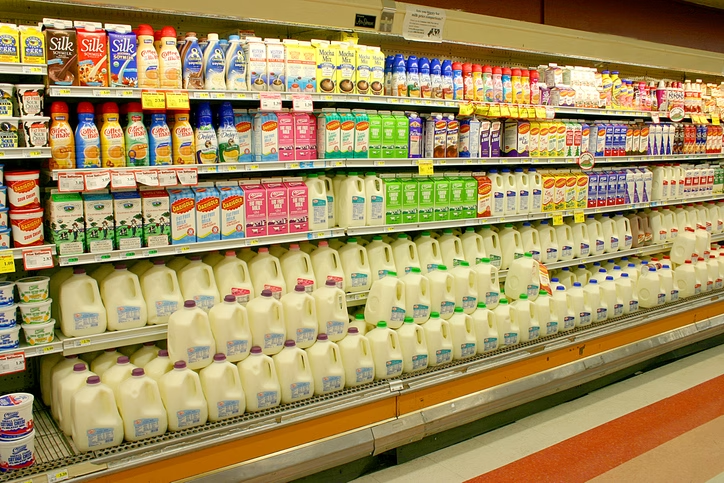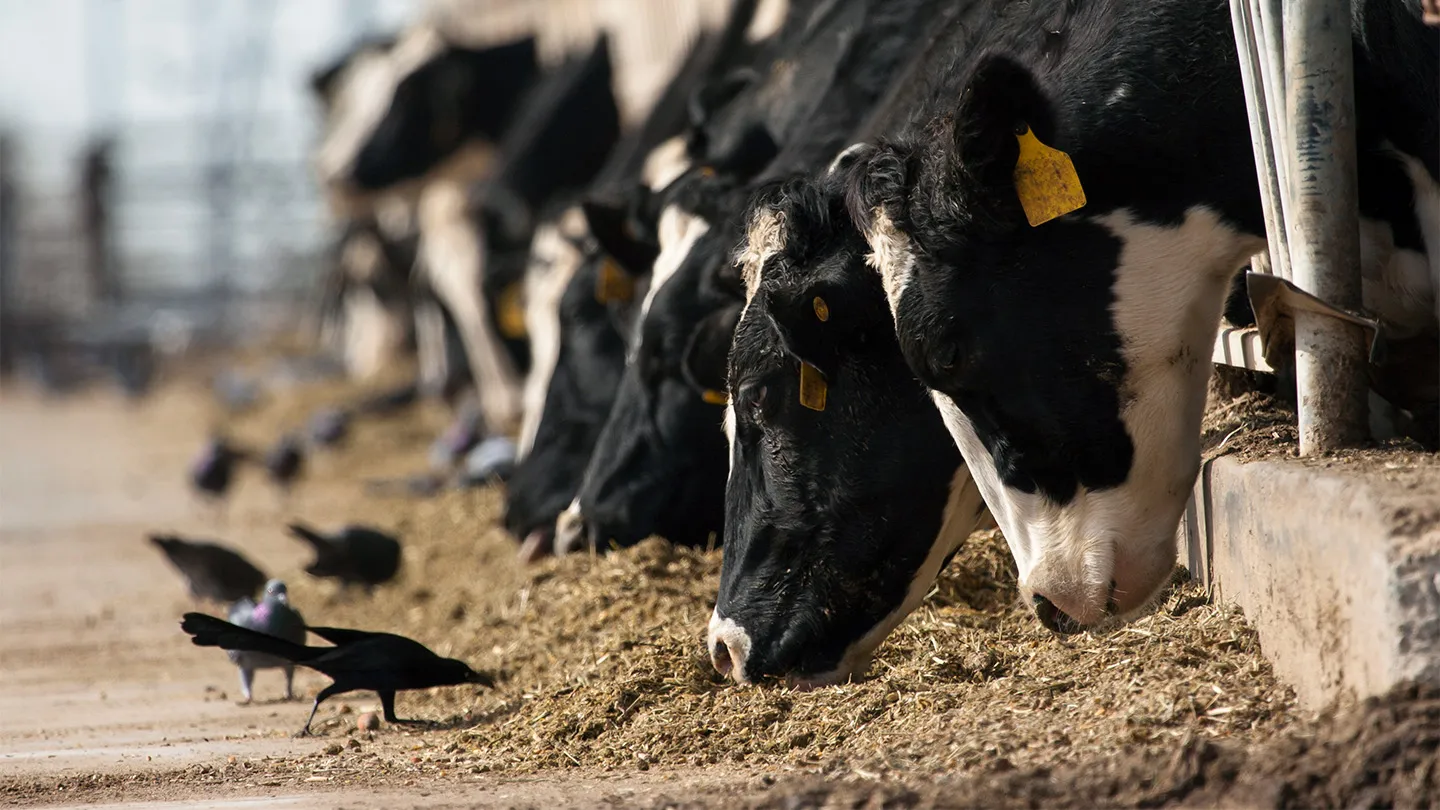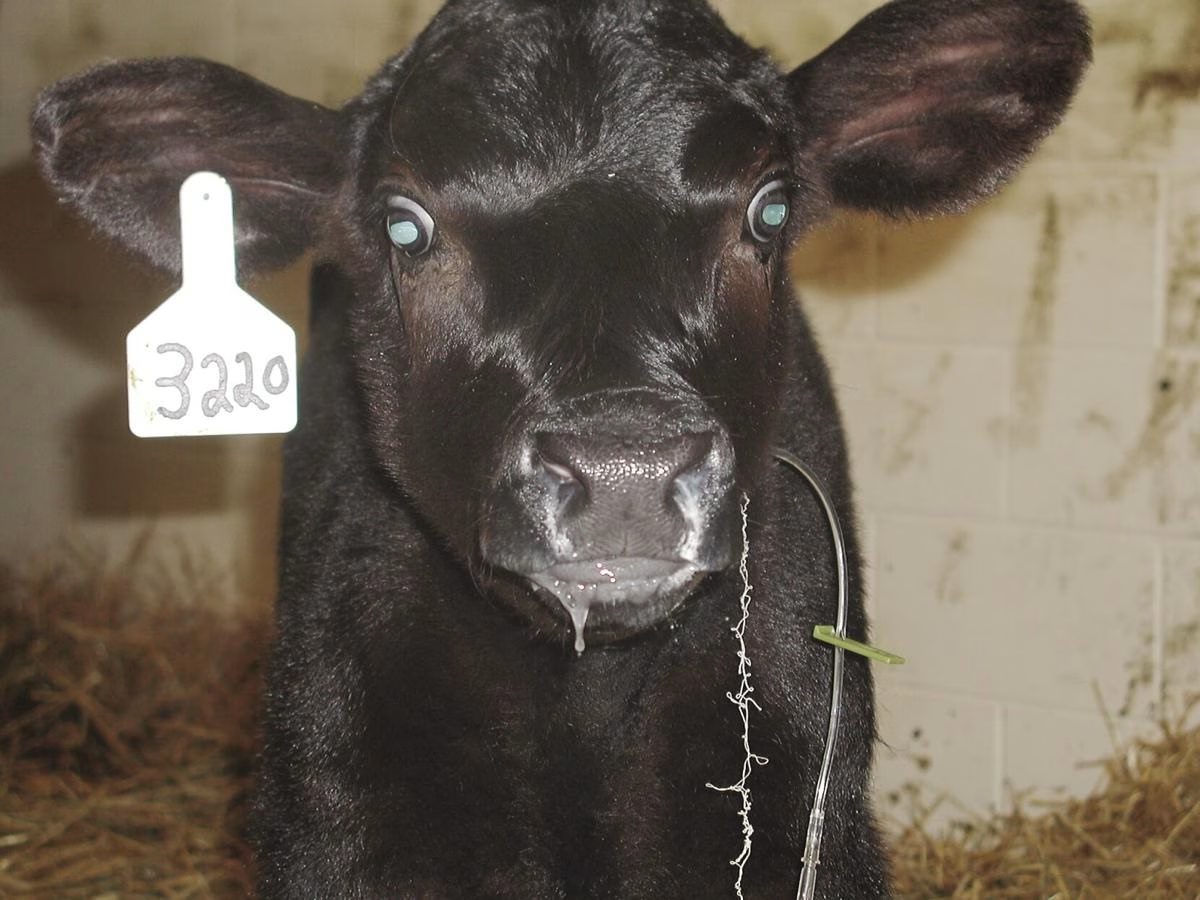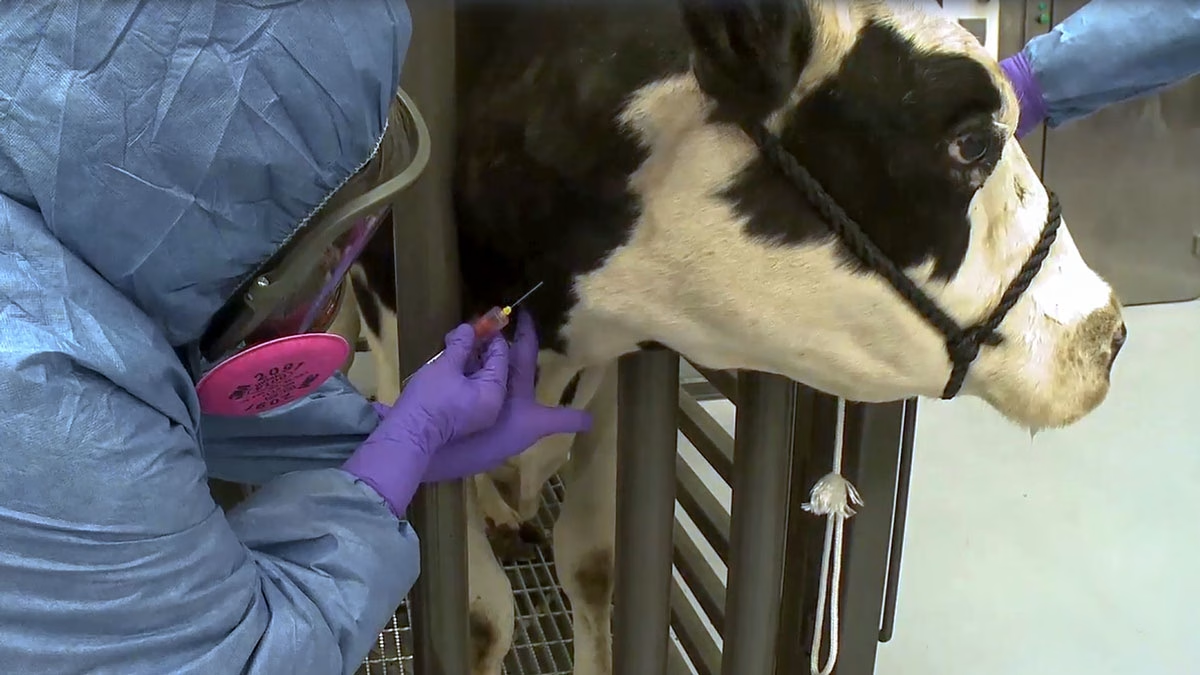Unlock the secret to a peaceful farm. End family feuds and increase productivity. Can better communication boost your dairy farm’s success?
Did you know that family feuds on farms may reduce output by as much as 20%? Conflicts between family members or essential workers may create a poisonous environment, delaying productivity and jeopardizing the farm’s viability. However, there are solutions. Resolving these challenges is critical to living a calm, productive farm life. If you’ve ever had tension between you and a family member interfere with your job, you’re not alone. Many people have encountered this, and we have some ideas that might help.
Imagine This: Morning Milking and Family Feuds – How Conflict Eats Away at Your Farm’s Bottom Line
Imagine this: You’re amid the morning milking, and there are tensions amongst family members over an unresolved choice. The cows are unconcerned with your conflicts, but your farm’s output declines. Conflict on a dairy farm may have concrete and intangible consequences, ranging from temporary interruptions to long-term financial instability. For instance, a disagreement over using a particular feed supplement could delay its application, affecting the health and productivity of the herd.
The Tangible Costs
The economic effect is most noticeable. When family members quarrel, their focus moves from agricultural activities to disagreement, lowering production. According to research, organizations that experience persistent conflict might lose up to 25% of their output [Management Study Guide]. For a dairy farm, this entails lower milk output, maintenance delays, and potentially ignored animal health risks. The financial implications of these conflicts are significant and cannot be ignored.
Financial losses do not end there. Hiring mediators, counseling services, or legal consultants to settle these disputes is costly. According to research, small to medium-sized family-owned firms spend thousands of dollars each year to handle internal problems [Magnolia Bank].
The Intangible Costs
The emotional toll might be much more severe. Burnout is often caused by prolonged stress and damaged relationships, which impacts decision-making and overall farm management. According to psychological studies, interpersonal conflict is one of the most common causes of workplace mental health concerns [Verywell Mind]. Is it relevant enough on a farm when each day brings new challenges?
Then there’s the rippling effect on morale. Watching family members fight may be discouraging for everyone on the farm. It may undermine trust and complicate aligning the team around similar objectives.
Unresolved confrontations can build an atmosphere where new arguments are more probable, creating persistent unhappiness. For example, a persistent fight over farm management choices might result in a lack of cohesiveness and lost possibilities for development and innovation.
The Smith family farm provides a striking example of this. Persistent disagreements among siblings about company direction resulted in uneven duties, a neglected herd, and a 15% decline in milk output over a year. When they sought mediation, they noticed results and restored productivity. This story is a testament to the power of effective conflict resolution and communication in farm management.
Uncontrolled disputes may spread like wildfire, depleting vital human and financial resources. Addressing these problems immediately may save your sanity and your farm.
Ever Wonder Why Some Farms Run Smoothly While Others Struggle? The Secret is Communication!
Effective communication is the key to a successful farm operation. It can reduce conflicts, increase productivity, and foster a harmonious work environment. Practicing practical, open, and honest communication can transform your farm’s operations and relationships. Want to learn how?
Open communication is like milk to a dairy farm: it’s important and needed when everyone understands what is required of them and feels heard, disputes decrease, production increases, and morale rises. So, how do you get there? Consider practical ways to increase communication between family members and essential professionals.
- Hold Regular Meetings: Meet weekly to address concerns, updates, and goals. This keeps everyone in the know and ensures that issues are handled on time.
- Active Listening: Don’t simply hear; listen. Demonstrate empathy and understanding. According to one research, poor listening causes around 60% of communication issues.
- Set Clear Expectations: Clearly identify roles and duties to minimize misunderstandings. Use written agreements if required.
- Invite Feedback: Encourage team members to share their ideas honestly. Create a comfortable workplace where feedback is perceived as a learning opportunity rather than a source of condemnation.
- Use Technology: A primary group chat may sometimes keep everyone engaged and lessen the likelihood of missed communication.
Take it from James, a successful dairy farmer from Wisconsin:
“Communication transformed our farm. We used to have constant arguments about roles and schedules. Weekly meetings and active listening helped us align our goals and understand each other better. Now, our farm runs smoother than ever.”
Implementing these ideas can help create a more pleasant atmosphere on your dairy farm. Remember that communication is more than simply talking; it is about understanding and being understood. After all, a farm that communicates effectively grows well.
Creating a Thriving Farm Environment: The Key to Unleashing Unseen Potential
A cheerful and supportive work atmosphere is not just beneficial for morale; it is also critical for productivity and long-term success. When your farm workers and family members feel respected and heard, you create an environment where everyone can flourish. Research shows happy workers are up to 20% more productive [Oxford University]. Consider what it would do for your farm’s production! Recognizing successes may dramatically enhance motivation, whether a simple “thank you” for a job well done or an incentive system for hitting milestones.
Teamwork is another essential component. When everyone knows their job and how it contributes to the farm’s success, it fosters a feeling of belonging and purpose. Regular team meetings and open venues for discussion help resolve any concerns before they escalate into more severe difficulties. So enjoy those victories together, and see as the joint effort drives your farm to new heights!
Practical Conflict Resolution Strategies Guaranteed to Boost Harmony on Your Farm
Resolving conflicts isn’t just about keeping the peace and improving farm operations and family life. Here’s how to make it happen:
1. Active Listening
Have you ever attempted to vent your displeasure only to be ignored? Active listening has the potential to modify this relationship. It’s a powerful tool that can change the dynamics of communication. Begin by giving the speaker your entire attention—put down your phone, establish eye contact, and nod to indicate comprehension. Summarize what they’ve said to verify you’ve understood correctly. This strategy encourages mutual respect and understanding.
Tip: Use phrases like, “What I’m hearing is…” or “It sounds like you’re saying…”
2. Mediation
When confrontations escalate, a neutral third person may sometimes assist in mediating. This can be a reassuring solution. Invite a respected community member or a professional mediator to lead the conversation. They can help keep everyone engaged and all voices heard.
Tool: Organizations like the American Arbitration Association offer resources on mediation.
3. Setting Clear Boundaries
Many disagreements stem from imprecise expectations and limits. Define precise duties and responsibilities for each family member and employee and ensure everyone knows their roles and limitations.
Step-by-step:
- Hold a meeting to discuss roles and responsibilities.
- Write down each person’s duties and distribute these lists.
- Review and adjust roles as needed.
4. Regular Check-Ins
Do not wait for disagreements to escalate. Schedule frequent check-ins to review how things are going and to resolve minor concerns before they escalate.
Tip: Make these check-ins a safe space where everyone can speak openly without fear of retribution.
5. Professional Development
Invest in training for yourself and your staff. Workshops on communication and conflict resolution may help everyone learn valuable skills.
Resource: Look into agricultural extension programs at universities like Cornell University, which often offer training sessions.
Implementing these tactics decreases stress while increasing productivity. Remember, a peaceful farm is more lucrative and fun.
Effective communication and conflict resolution abilities may alter the atmosphere of your farm. By carefully listening, using mediation, creating clear limits, and investing in professional growth, you can foster an environment where everyone can succeed. What measures will you take today to improve communication on your farm?
Building a Collaborative Farm Culture: Your Path to Operational Success and Family Harmony
Building a collaborative farm culture is not only enjoyable; it is also essential for operational success and family harmony. Cultivating a collaborative and supportive culture may revolutionize your everyday operations in an environment where every hand counts and every choice influences farm productivity. But why is this important? And, as a dairy farmer, how can you ensure your farm runs smoothly?
Trust and mutual respect are essential to every successful organization, including farms. Begin by being open and honest in your discussions, and include family members and workers in decision-making. This helps individuals feel appreciated and respected. Remember, individuals are more devoted to choices in which they have a say.
How do you build this trust and respect? Here are some tips:
- Lead by Example: Show respect, integrity, and willingness to listen. When others see you embodying these qualities, they will likely follow suit.
- Open Communication Channels: Create a culture where everyone feels safe to voice their opinions and concerns without fear of judgment. Regular meetings, suggestion boxes, and anonymous feedback can help.
- Celebrate Small Wins: Recognize your team’s efforts, no matter how minor they may seem. This boosts morale and builds a positive, supportive atmosphere.
- Provide Learning Opportunities: Invest in your employees’ development. Workshops, training sessions, and industry seminars show that you value their growth.
How does all of this translate into measurable results? A pleasant work atmosphere boosts both productivity and job happiness. When employees like their jobs, they are more likely to be productive and generate high-quality output.
So, What’s the Secret Sauce for a Drama-Free Farm? You Guessed It—Leadership
So, what’s the key to a drama-free farm? You guessed it: leadership. A great leader is the glue that ties everything together, even when disaster strikes. When you lead with vision and empathy, people will naturally follow suit. But, as a dairy farm owner, how can you use the power of outstanding leadership to prevent conflicts?
First, recognize that leadership is about setting a good example. Your team will pick up on it when you display practical communication skills, active listening, and impartiality. They learn that settling differences gently and politely is the rule rather than the exception.
But what if you aren’t a natural-born leader? Don’t worry; leadership is a talent just like any other. You may improve it by practicing and finding resources. Consider enrolling in agriculture-specific leadership training programs. Penn State Extension provides outstanding leadership development training for dairy farmers. Remember to consider the value of books and online courses. Patrick Lencioni’s “The Five Dysfunctions of a Team” provides helpful information.
Leading by example also entails being honest and open. Accept responsibility for whatever mistakes you make. Admit that you need to have all the solutions. Your humility will build a culture of trust, making it more straightforward to resolve disagreements when they emerge. According to a Harvard Business Review research, 72% of workers would lose faith in their leaders if they refused to recognize their errors.
Finally, feel free to provide feedback. Encourage your staff to offer you constructive feedback. This will help you develop as a leader and support the concept that everyone’s opinion counts, which is critical for conflict resolution.
Strong leadership is more than simply a title; it is a continuous commitment to self-improvement and setting the tone for a peaceful, productive farm. Invest in yourself and see how it transforms your farm’s atmosphere.
Another Crucial Ingredient to a Harmonious Farm Environment: Encouraging Open Feedback
Another critical component of a healthy farm environment is fostering candid feedback. Consider a setting where family members and colleagues feel comfortable expressing their opinions and ideas. Does your farm exude such an atmosphere?
Trust is essential for fostering an open feedback culture. People must understand that they may speak out without fear of being judged or punished. It’s about making everyone feel respected and understood. A farm flourishes when everyone, from the most minor worker to the most experienced farmer, believes they can contribute to its success.
So, how can you foster this environment? First, lead by example. Show that you value feedback by asking for it regularly. When receiving feedback, listen actively and show appreciation—even if you disagree.
Let’s break down a few tips:
- Be Specific: When giving feedback, be clear and specific about the behavior or issue you’re addressing. Instead of saying, “You need to work harder,” try, “I’ve noticed that the cows weren’t milked on time yesterday, which impacted our schedule.”
- Focus on the Behavior, Not the Person: Target the actions, not the individual’s character. This makes the feedback less personal and more constructive. For example, “Missed feedings cause stress for our animals” instead of “You are neglectful.”
- Use “I” Statements: Frame your feedback from your perspective. This helps to reduce defensiveness. For instance, “I feel concerned when the equipment isn’t maintained because it affects our productivity.”
- Offer Solutions: Pair your feedback with potential solutions or alternatives. “Let’s make a checklist for daily tasks to ensure nothing gets missed” offers a constructive way forward.
- Set a Positive Tone: Start and end on a positive note. “You’ve been doing a great job with the new calves, and with more attention to the feeding schedule, our efficiency will improve even more.”
And equally important is how to receive feedback gracefully:
- Listen Actively: Give your full attention and truly listen to what is being said without interrupting.
- Stay Open-Minded: Avoid getting defensive. Consider the feedback as an opportunity for growth.
- Ask Clarifying Questions: If something isn’t clear, ask for specifics to understand the feedback better.
- Show Appreciation: Thank the person for their feedback, regardless of whether you agree with it. This shows respect and a willingness to improve.
- Reflect and Act: Consider the feedback and decide on actionable improvement steps.
Remember, a farm’s success often hinges on the quality of its communication. When feedback flows freely and constructively, everyone wins.
The Bottom Line
As we’ve seen, the lifeblood of a flourishing farm is not only in the fields or barns but also in the power of your communication and dispute-resolution abilities. Adequate communication bridges gaps, while proactive conflict resolution guarantees that everyone is paddling in the same direction, strengthening family relationships and your bottom line.
Now, it’s time to take action. Implement the practices mentioned, including active listening, mediation, frequent check-ins, and professional growth. Each strategy can improve your farm’s culture and strengthen connections. Remember, leadership is about creating a peaceful workplace where everyone feels appreciated.
How might improved communication and dispute resolution help your farm reach new heights? Begin now and see the impact it can make. The success of your farm depends not only on what you accomplish but also on how effectively you work together.
Key Takeaways:
Conflict on the farm doesn’t just disrupt family harmony; it can be a silent killer of productivity and profitability. So, what can dairy farmers do to foster better communication and smoother operations? Here are the key takeaways:
- Effective communication is crucial for resolving conflicts, boosting morale, and improving farm productivity.
- Practical strategies like active listening, mediation, and clear boundary-setting can prevent misunderstandings.
- Regular check-ins and professional development opportunities create a more cohesive and cooperative work environment.
- Building a collaborative farm culture requires leadership prioritizing open feedback and mutual respect.
- Addressing conflicts proactively can prevent them from escalating, ensuring a harmonious and financially successful farm.
Summary:
Ever felt the tension simmering while milking cows or during a family meeting on the farm? Conflicts on a dairy farm don’t just cause headaches; they can significantly dent your bottom line. But why do some farms run like well-oiled machines while others struggle with constant friction? The answer lies in communication. This article dives deep into practical strategies to foster better relationships among critical people on your farm, including family members. Implement these strategies, and watch your farm transform from a battleground into a thriving, harmonious environment. One experienced farmer says, “Good communication is as essential as good feed; without it, everything falls apart.” Family feuds can reduce output, cause maintenance delays, and risk animal health. These conflicts can cost small to medium-sized firms thousands annually, leading to burnout and mental health concerns. Effective communication—active listening, mediation, clear boundaries, regular check-ins, and professional development—can transform your farm, boosting productivity and harmony.
Learn more:
- Creating a Lasting Dairy Farm Legacy: 5 Essential Steps You Need to Know
- Secure Your Family Farm’s Future: Top 5 Essential Elements for a Successful Transition Plan
- Why 80% of U.S. Dairy Farms Are Struggling: An Insider’s Look at the Unseen Challenges
 Join the Revolution!
Join the Revolution!
Bullvine Daily is your essential e-zine for staying ahead in the dairy industry. With over 30,000 subscribers, we bring you the week’s top news, helping you manage tasks efficiently. Stay informed about milk production, tech adoption, and more, so you can concentrate on your dairy operations.







 Join the Revolution!
Join the Revolution!












